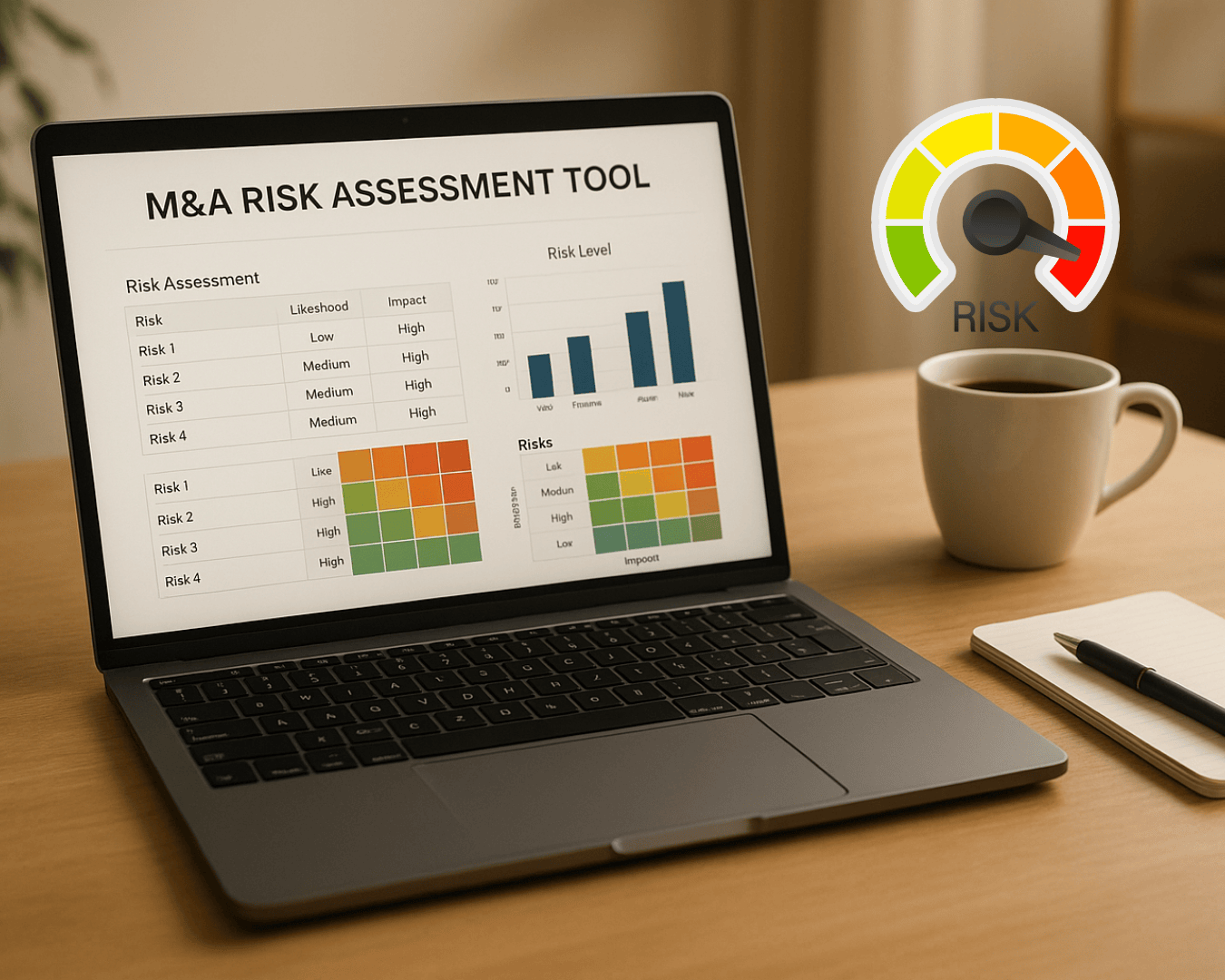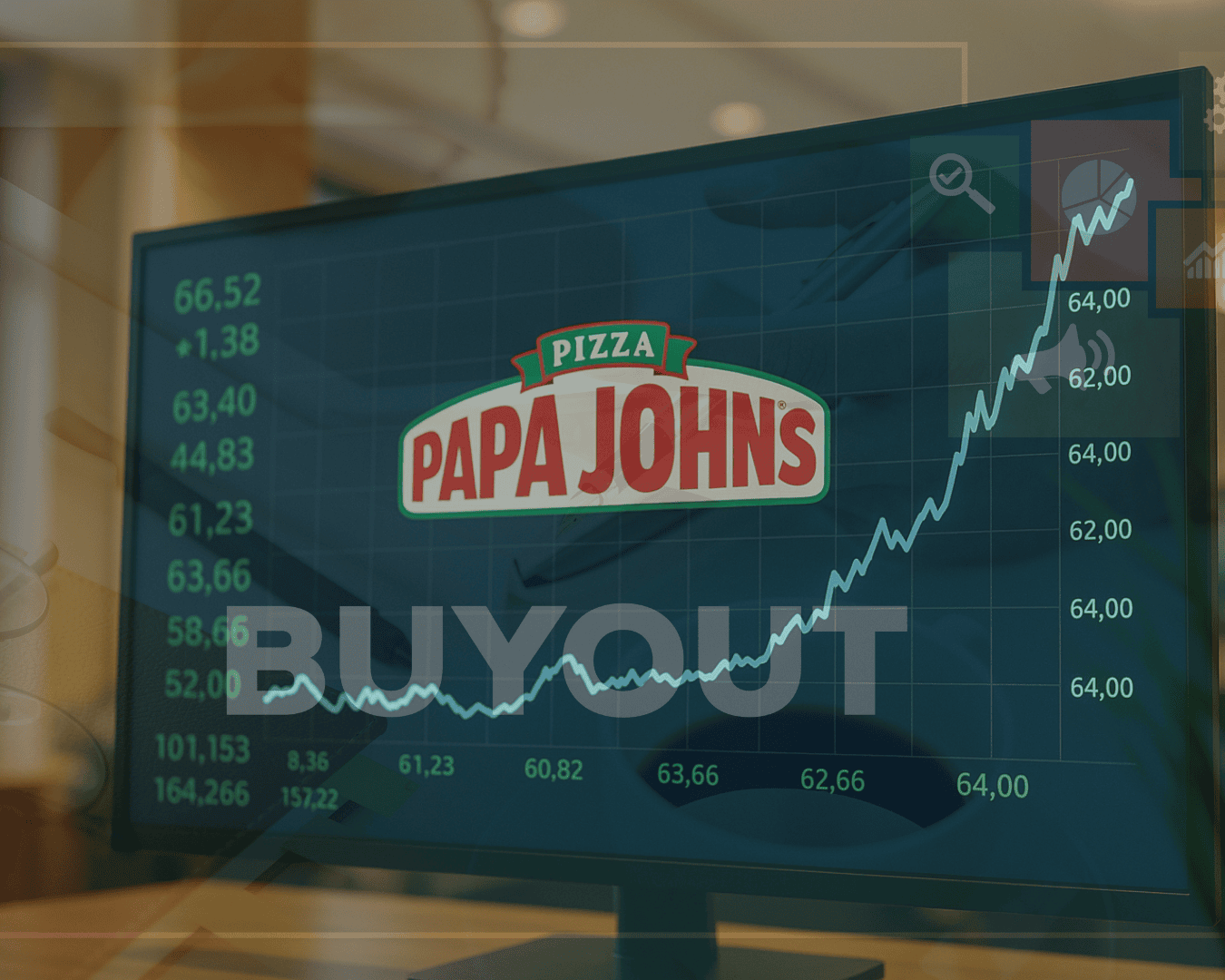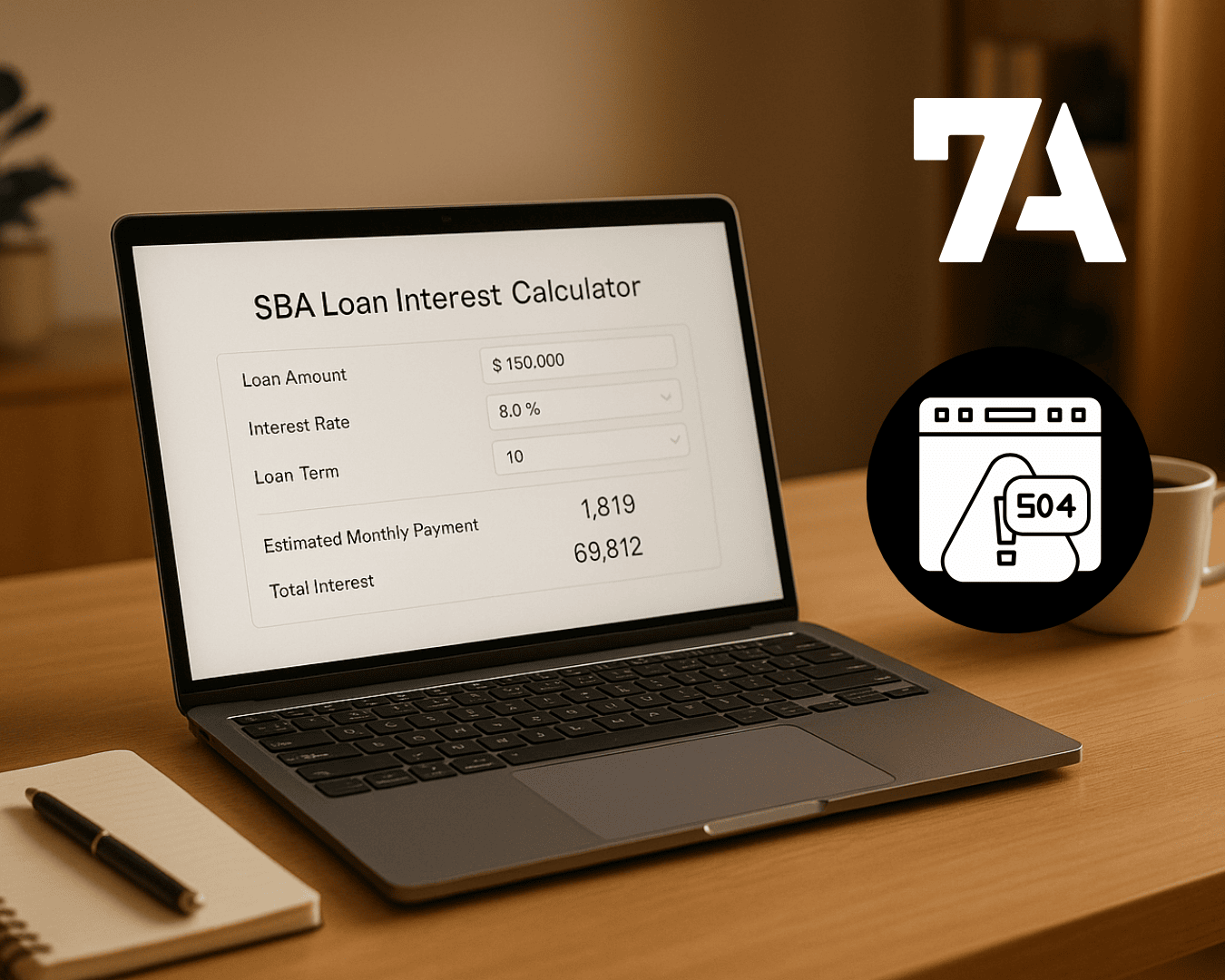Managing working capital efficiently is essential for keeping your business running smoothly. By tracking key performance indicators (KPIs), you can identify cash flow bottlenecks, improve liquidity, and maximize growth opportunities. Here are 10 must-know KPIs for assessing working capital:
- Working Capital Ratio: Measures your ability to cover short-term debts. Ideal range: 1.2–2.0.
- Current Ratio: Evaluates liquidity using all current assets. Healthy range: 1.5–3.0.
- Quick Ratio: Focuses on liquid assets, excluding inventory. Target: 1.0–1.5.
- Cash Conversion Cycle (CCC): Tracks how long cash is tied up in operations. Aim for 30–90 days.
- Days Sales Outstanding (DSO): Shows how quickly you collect payments. Lower is better; aim for 30–45 days.
- Days Inventory Outstanding (DIO): Tracks how long inventory remains unsold. Benchmark: 30–60 days.
- Days Payable Outstanding (DPO): Measures how long you take to pay suppliers. Typical range: 30–60 days.
- Inventory to Working Capital Ratio: Indicates how much working capital is tied to inventory. Keep it between 20–50%.
- Working Capital Turnover: Assesses how efficiently working capital generates sales. Target: 4–8 times.
- Net Cash Position: Shows your liquidity after accounting for debt. Positive values are ideal.
These KPIs offer a clear picture of your financial health, helping you make informed decisions to optimize cash flow and sustain growth. Regularly tracking them can reveal trends, improve efficiency, and prepare you for opportunities or challenges ahead.
1. Working Capital Ratio
Definition and Formula
The working capital ratio is a key measure of a company's ability to meet short-term debts using its short-term assets. It provides a snapshot of whether a business has enough resources to cover immediate financial obligations.
Here’s the formula:
Working Capital Ratio = Current Assets ÷ Current Liabilities
Current assets include cash, accounts receivable, inventory, and other resources that can be converted into cash within a year. Current liabilities, on the other hand, consist of accounts payable, short-term loans, accrued expenses, and any debts due within 12 months.
This ratio is a go-to metric for assessing liquidity, making it essential for both day-to-day operations and long-term planning.
Typical Benchmark Range
A healthy working capital ratio generally falls between 1.2 and 2.0. This range suggests that a company has enough short-term assets to comfortably cover its debts.
- A ratio below 1.0 signals that liabilities exceed assets, which could indicate financial trouble.
- Ratios between 1.0 and 1.5 suggest adequate liquidity, though a ratio of exactly 1.0 leaves little room for unexpected costs.
- A ratio significantly above 2.0 might indicate inefficiency, as it suggests excess cash that could be reinvested for growth.
Impact on Working Capital Efficiency
This ratio reveals much about a company's short-term financial health and its ability to manage daily operations. A ratio above 1.0 indicates sufficient assets to cover liabilities, reducing the risk of financial strain. However, a ratio below 1.0 could signal liquidity problems and potential challenges in meeting obligations. For stakeholders, such as potential buyers or lenders, this metric is a quick way to assess financial stability and operational soundness.
Use Cases and Industry Relevance
The ideal working capital ratio varies by industry, reflecting differences in business models and cash flow cycles:
- Transportation and Logistics: Ratios often range between 1.0 and 1.1, as these businesses rely on quick cash turnover and minimal inventory.
- Retail and Food Processing: Ratios typically fall between 1.3 and 1.5, driven by inventory needs.
- Manufacturing and Industrial: These sectors often report ratios in the 2.0–4.0 range, due to longer cash cycles and higher inventory requirements.
- Technology and Healthcare: Higher ratios are common, reflecting investments in research, development, and high-value inventory.
For small and medium-sized businesses, particularly those exploring acquisitions or seeking funding, the working capital ratio is a vital indicator of financial health. Buyers use it to evaluate liquidity, while lenders rely on it to determine creditworthiness and repayment potential. This metric sets the stage for analyzing other liquidity indicators in following sections.
2. Current Ratio
Definition and Formula
The current ratio is a financial metric that shows how well a company can meet its short-term obligations using its short-term assets. The formula is straightforward:
Current Ratio = Current Assets ÷ Current Liabilities
This calculation reveals how many dollars of assets are available for every $1.00 of liabilities. For example, a current ratio of 1.5 means the company has $1.50 in assets for every dollar it owes. Let's dive into what makes a "good" current ratio and how it plays into managing working capital.
Typical Benchmark Range
While the ideal current ratio can vary by industry, here are some general guidelines:
- Below 1.0: A warning sign that liabilities exceed assets, which could lead to liquidity problems.
- 1.0 to 1.5: Indicates manageable liquidity, though it may be on the tighter side.
- 1.5 to 3.0: Often considered a sweet spot for most industries, balancing liquidity and efficiency.
- Above 3.0: Could suggest the company isn’t using its assets effectively, possibly holding too much cash or underutilizing resources.
Impact on Working Capital Efficiency
A solid current ratio can be a game-changer for securing financing and building trust with suppliers. Lenders and vendors often look for companies with strong liquidity before offering favorable credit terms. For instance, many banks require a minimum current ratio, typically between 1.25 and 1.5, as part of loan agreements.
However, a ratio that’s too high might signal inefficiency. If a company is sitting on too much cash or other idle assets, it could be missing out on opportunities to reinvest in growth.
Use Cases and Industry Relevance
Different industries have their own norms for current ratios, shaped by their operational and financial structures:
- Service-based businesses: Typically operate with lower ratios (1.2 to 1.8) due to minimal inventory and quicker cash cycles.
- Manufacturers: Tend to have higher ratios (2.0 to 3.5) because of larger inventory investments and longer production timelines.
- Seasonal businesses: Experience fluctuating ratios. For example, building up inventory before a busy season can temporarily lower the ratio, which then improves as inventory is sold and converted to cash.
For companies involved in acquisitions or seeking investments, analyzing current ratio trends over time can reveal cash flow patterns or seasonal shifts. In industries like technology, businesses often maintain higher ratios to cushion against revenue volatility, while established manufacturers might aim for tighter ratios due to more predictable cash flow cycles.
3. Quick Ratio (Acid-Test Ratio)
Definition and Formula
The quick ratio, also known as the acid-test ratio, zeroes in on a business's liquidity by focusing solely on assets that can be quickly converted into cash. Unlike the current ratio, this measure excludes inventory and prepaid expenses, which are less liquid. It provides a stricter assessment of whether a company can meet its short-term obligations.
Quick Ratio = (Current Assets - Inventory - Prepaid Expenses) ÷ Current Liabilities
In simpler terms, the quick ratio evaluates how well a company can cover its immediate debts using only its most liquid assets - cash, marketable securities, and accounts receivable.
This metric answers an essential question: Can your business pay its short-term liabilities without relying on inventory sales? By highlighting this, the quick ratio becomes a valuable tool for assessing financial flexibility, especially in times of cash shortages or unexpected expenses.
Typical Benchmark Range
The quick ratio is often assessed using the following benchmarks, which are more conservative compared to the current ratio:
- Below 0.5 – Indicates potential liquidity challenges.
- 0.5 to 1.0 – Moderate liquidity; may depend on inventory turnover.
- 1.0 to 1.5 – Strong liquidity with sufficient liquid assets to cover liabilities.
- Above 1.5 – Could suggest excess cash that might be underutilized.
Impact on Working Capital Efficiency
The quick ratio sheds light on how effectively a company manages its most liquid assets. A ratio below 1.0 doesn’t always spell trouble but does indicate a reliance on inventory sales to sustain cash flow. This dependence can become problematic during economic slowdowns or seasonal dips in demand.
On the flip side, businesses with a healthy quick ratio often enjoy more leverage with suppliers, such as securing early payment discounts. They’re also better equipped to seize unexpected opportunities, like bulk purchase deals or strategic acquisitions, without needing to secure external funding.
However, an overly high quick ratio may signal inefficiencies, such as holding too much idle cash instead of reinvesting it into growth opportunities.
Use Cases and Industry Relevance
The importance of the quick ratio varies widely across industries, as different sectors have unique liquidity needs:
- Technology and service companies typically maintain quick ratios between 1.2 and 2.0. With minimal inventory and fast receivable turnover, these businesses need liquid reserves to scale quickly or navigate revenue fluctuations.
- Retail and manufacturing businesses often operate with lower quick ratios, ranging from 0.6 to 1.2. Inventory makes up a significant part of their current assets, so the quick ratio reflects their ability to handle supply chain disruptions or dips in demand without resorting to heavy discounting.
- Seasonal businesses see their quick ratios fluctuate significantly throughout the year. For example, a landscaping company might show a quick ratio of 0.4 in the spring when funds are tied up in supplies and equipment, but this could rise to 1.8 by fall after converting seasonal work into cash and receivables.
For companies planning acquisitions or seeking investment, tracking the quick ratio over several quarters can uncover trends in cash management and operational stability. Lenders also often use quick ratio thresholds as part of loan agreements, making this metric critical for maintaining access to credit and favorable borrowing terms.
4. Cash Conversion Cycle (CCC)
Definition and Formula
The Cash Conversion Cycle (CCC) is a key measure of how efficiently a business manages its working capital. It calculates the time it takes for a company to turn its investments in inventory into cash. By focusing on the flow of money through operations, the CCC highlights how long cash is tied up before it comes back into the business.
Here’s the formula:
Cash Conversion Cycle = Days Sales Outstanding (DSO) + Days Inventory Outstanding (DIO) - Days Payable Outstanding (DPO)
- DSO: Tracks the average time it takes for customers to pay after making a purchase.
- DIO: Measures how long inventory remains unsold.
- DPO: Reflects the average number of days a company takes to pay its suppliers.
In essence, the CCC shows how many days it takes for every dollar invested in inventory to return as cash. A shorter cycle indicates quicker cash flow and more efficient use of working capital.
Typical Benchmark Range
The CCC varies significantly across industries, but general benchmarks include:
- Negative CCC: Sign of exceptional efficiency - cash is collected before suppliers are paid.
- 0 to 30 days: Reflects strong working capital management.
- 30 to 60 days: Indicates good efficiency for most industries.
- 60 to 90 days: Average performance, with room for improvement.
- Above 90 days: Suggests potential cash flow challenges.
When a business achieves a negative CCC, it essentially uses customer payments to fund operations, creating a natural financial advantage.
Impact on Working Capital Efficiency
The length of a company's CCC directly affects its financial health. A longer cycle ties up more cash in operations, which may lead to a reliance on external financing. On the other hand, a shorter cycle means the company needs less working capital to support its revenue, reducing borrowing costs and improving cash flow.
For example, fast-moving consumer goods companies often maintain cycles of 20-40 days by keeping inventory lean and negotiating favorable payment terms. In contrast, manufacturing companies may have cycles of 60-120 days due to complex production processes and extended payment terms. Even within manufacturing, optimizing inventory and supplier agreements can significantly improve the cycle.
Efficient cash conversion cycles also provide businesses with more flexibility to scale. Companies with shorter cycles can grow without requiring substantial external funding, while those with longer cycles may face challenges in financing expansion.
Use Cases and Industry Relevance
The CCC is especially relevant for understanding how different industries manage cash flow based on their unique business models:
- Retail businesses: Typically aim for cycles between 30-60 days. Grocery stores often achieve some of the shortest cycles, sometimes negative, by selling perishable goods quickly while securing 30-60 day payment terms with suppliers. Department stores, however, may have cycles of 60-90 days due to seasonal inventory and slower turnover.
- Technology companies: Particularly those with subscription-based models, often maintain shorter cycles of 15-45 days. Minimal inventory and faster payment collection give them a natural advantage in working capital management.
- Construction and project-based businesses: Frequently experience cycles exceeding 90 days due to extended project timelines and milestone-based payment structures. These businesses often rely on specialized financing to manage their cash flow.
For companies seeking financing or investment, the CCC is an essential metric. It provides insight into operational efficiency and cash flow consistency, which lenders and investors often analyze over multiple quarters to assess a company’s ability to manage its financial obligations.
Tracking the CCC on a monthly basis can reveal seasonal trends and identify operational bottlenecks. Small adjustments - like speeding up customer collections, reducing inventory levels, or negotiating longer payment terms with suppliers - can lead to significant improvements in cash flow and overall efficiency.
Up next, we’ll dive deeper into Days Sales Outstanding and its role in refining operational metrics.
5. Days Sales Outstanding (DSO)
Definition and Formula
Days Sales Outstanding (DSO) tracks how long it takes a business to convert credit sales into cash. It’s a key measure of how efficiently a company manages its accounts receivable within the Cash Conversion Cycle. This metric directly impacts cash flow timing and offers insights into collection efficiency.
Here’s the formula:
DSO = (Accounts Receivable ÷ Total Credit Sales) × Number of Days
To calculate DSO, use the formula on a monthly basis (multiply by 30) or quarterly (multiply by 90) to identify trends and detect potential payment delays.
A lower DSO means quicker payment collection, leading to healthier cash flow and reducing the risk of bad debt. On the flip side, a higher DSO indicates slower payments, which could strain cash flow and increase collection costs.
Typical Benchmark Range
DSO benchmarks vary widely depending on the industry, as payment terms and customer behaviors differ. Here's a general breakdown:
- 0 to 30 days: Outstanding performance, often seen in cash-oriented businesses or those with excellent collection systems.
- 30 to 45 days: Strong performance, common for B2B companies with standard net-30 terms.
- 45 to 60 days: Average performance, though it may signal some collection delays.
- 60 to 90 days: Below-average performance, pointing to collection issues.
- Above 90 days: Poor performance, often reflecting serious payment challenges or overly lenient credit policies.
Industry-specific benchmarks also play a role. For example, professional services firms might see DSO between 45-75 days, while retail businesses, which often rely on cash sales, typically achieve 15-30 days. Manufacturing companies usually fall between 45-65 days, depending on their customer base and payment terms.
Impact on Working Capital Efficiency
DSO has a direct effect on a company’s working capital needs. Faster customer payments free up cash for reinvestment into operations, inventory, or growth. For example, a business with $100,000 in monthly sales and a 60-day DSO ties up $200,000 in receivables. Cutting the DSO in half could unlock significant funds for expansion.
This dynamic is especially critical for small businesses. Longer collection cycles often force companies to rely on credit lines to cover day-to-day expenses while waiting for payments. Reducing DSO by even 10-15 days can lower borrowing costs and boost profitability.
There’s also the risk of bad debt. Accounts unpaid for more than 90 days are far more likely to become uncollectible. Shortening the collection cycle not only improves cash flow but also minimizes the risk of customer defaults.
Use Cases and Industry Relevance
Different industries face unique DSO challenges due to their business models and customer relationships:
- Software and technology companies: With automated billing and subscription models, these businesses often achieve DSO of 30-50 days. However, enterprise software providers may experience 60-90 days due to longer approval processes and milestone-based payments.
- Healthcare providers: Extended DSO periods of 60-120 days are common due to delays in insurance claims and patient payments. Many providers adopt specialized collection strategies or sell receivables to maintain cash flow.
- Construction and contracting businesses: DSO typically ranges from 45-90 days, influenced by project payment schedules and approval processes. Progress payments and retainers help mitigate lengthy collection periods.
- Professional services firms: Businesses like law firms, consulting agencies, and accounting practices often maintain DSO between 45-75 days. Strategies like requiring retainers, monthly billing, and early payment discounts help improve collection times.
For companies seeking financing, DSO trends offer valuable insights into operational efficiency and cash flow predictability. A consistently improving DSO reflects strong management, while a rising DSO may signal underlying issues like poor credit management or operational inefficiencies.
Segmenting DSO by customer type can reveal even more actionable insights. For instance, large corporate clients may have longer but predictable payment cycles, while smaller clients might pay faster but with more variability. Tailoring credit terms and collection strategies to different customer groups can optimize DSO, improve cash flow, and reduce dependency on external financing.
6. Days Inventory Outstanding (DIO)
Definition and Formula
Days Inventory Outstanding (DIO) measures how many days it takes for a business to turn its inventory into sales. This metric provides insight into inventory management efficiency and sales velocity. Since it directly impacts the amount of cash tied up in unsold goods, DIO plays a key role in the Cash Conversion Cycle and broader cash flow analysis.
The formula for DIO is:
DIO = (Average Inventory ÷ Cost of Goods Sold) × Number of Days
To calculate the average inventory, add the beginning and ending inventory for the period and divide by two. Ensure the time frame used for the calculation is consistent - for example, 365 days for annual data or 90 days for quarterly data.
- A low DIO means inventory moves quickly, freeing up cash for other uses.
- A high DIO suggests slower turnover, which can lead to higher storage costs, risks of obsolescence, and markdowns.
Typical Benchmark Range
DIO benchmarks vary across industries because factors like product lifecycles, seasonality, and business models differ. Below is a general guide to DIO ranges:
- 0 to 30 days: Indicates excellent inventory turnover, often seen in businesses with perishable goods or just-in-time systems.
- 30 to 60 days: Reflects strong performance, typical for fast-moving consumer goods and retail.
- 60 to 90 days: Represents average turnover, common in manufacturing and wholesale sectors.
- 90 to 120 days: Signals inefficiencies in inventory management.
- Above 120 days: Suggests poor performance, often due to overstocking or weak demand forecasting.
For example, grocery stores typically have a DIO of 15 to 25 days because of the perishable nature of their products. Fashion retailers, operating on seasonal cycles, may have DIO values between 60 and 90 days. Manufacturing companies often fall into the 45 to 75-day range, depending on production complexity and supply chain dynamics.
Impact on Working Capital Efficiency
DIO directly affects a company’s working capital by quantifying how much cash is tied up in unsold inventory. High DIO can hinder growth, strain debt repayment, and limit operational flexibility. For instance, a business with $500,000 in monthly COGS and a 90-day DIO ties up $1.5 million in inventory. Reducing the DIO to 60 days could free up $500,000 for other uses.
This issue becomes even more critical for seasonal businesses. Companies that stockpile inventory ahead of busy periods may face significant cash flow challenges. Effective DIO management ensures enough inventory is available to meet demand without unnecessarily tying up cash.
Holding inventory for extended periods also increases storage costs, insurance premiums, and the risk of obsolescence. Products that remain unsold for too long may require markdowns or, in some cases, become unsaleable altogether, cutting into profitability.
Use Cases and Industry Relevance
The real-world implications of DIO vary widely by industry:
- Retail and E-commerce: Fast fashion brands have streamlined their design-to-shelf processes, achieving DIO figures as low as 30-45 days. Traditional retailers, however, often range between 60 and 90 days.
- Manufacturing: Inventory management in manufacturing includes raw materials, work-in-progress, and finished goods. Automotive manufacturers typically maintain DIO values between 45 and 60 days, while aerospace companies may exceed 120 days due to long production cycles and specialized components.
- Food Service and Restaurants: With fresh ingredients that spoil quickly, DIO figures are usually very low - often between 5 and 15 days.
- Technology and Electronics: Rapid product cycles push tech companies to aim for shorter DIO periods. For example, a smartphone manufacturer might target 30-45 days to reduce the risk of obsolescence as newer models hit the market.
For businesses seeking loans or investment, DIO trends can be a valuable indicator of operational efficiency. A declining DIO often reflects improved inventory control and demand forecasting, while an increasing DIO may signal potential challenges or inefficiencies.
To manage DIO effectively, businesses often segment inventory by product category, seasonality, and turnover rates. For fast-selling items, a target DIO of 15-30 days might be ideal, while specialty or seasonal products could sustain a DIO of 60-90 days. This tailored approach helps balance working capital needs with the goal of efficiently meeting customer demand.





























.png)







































.png)








































